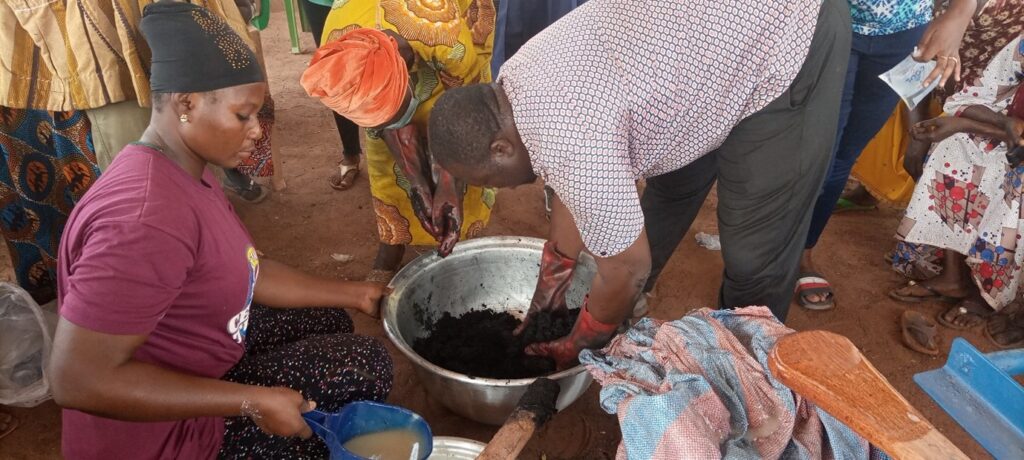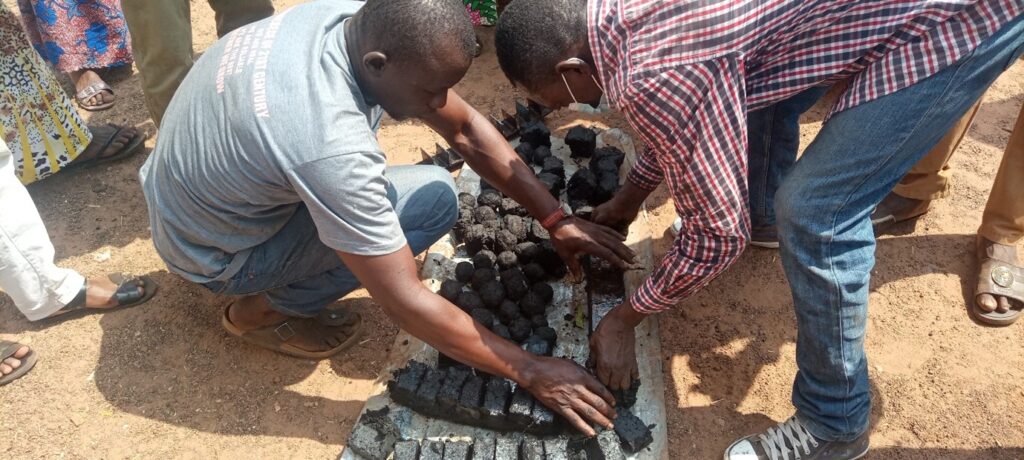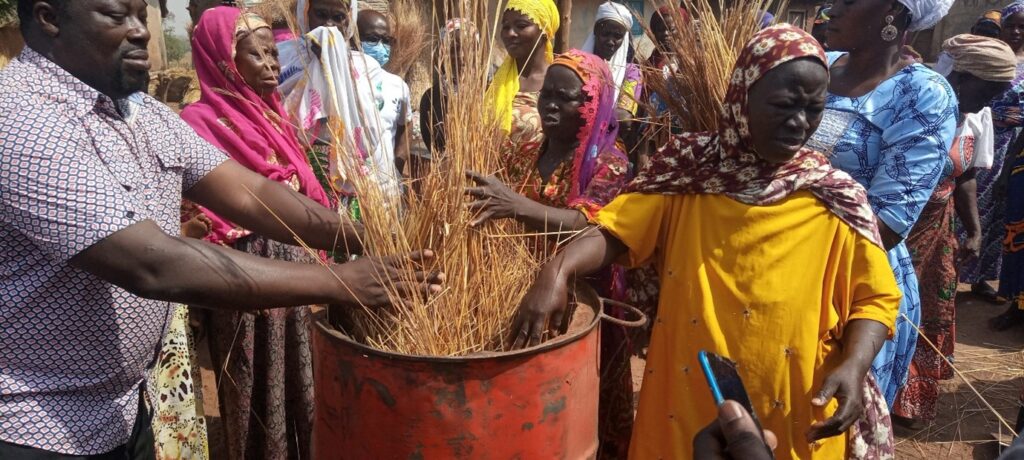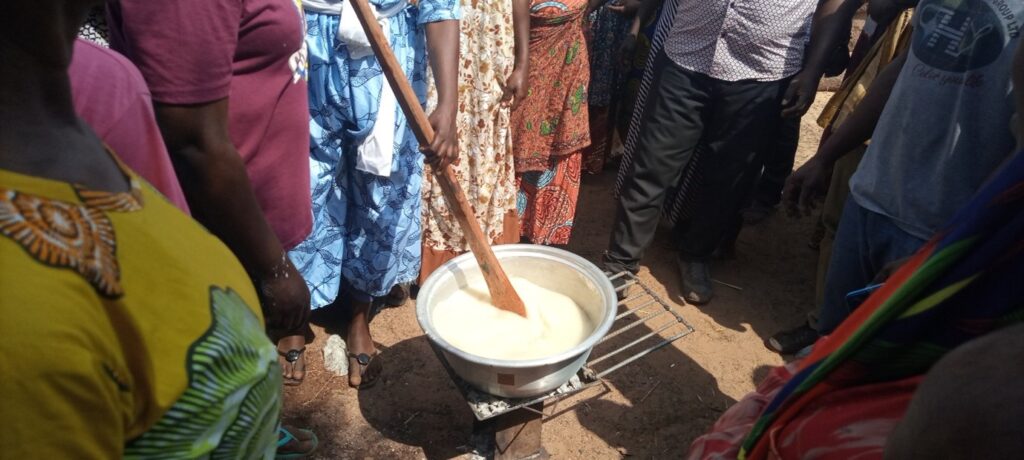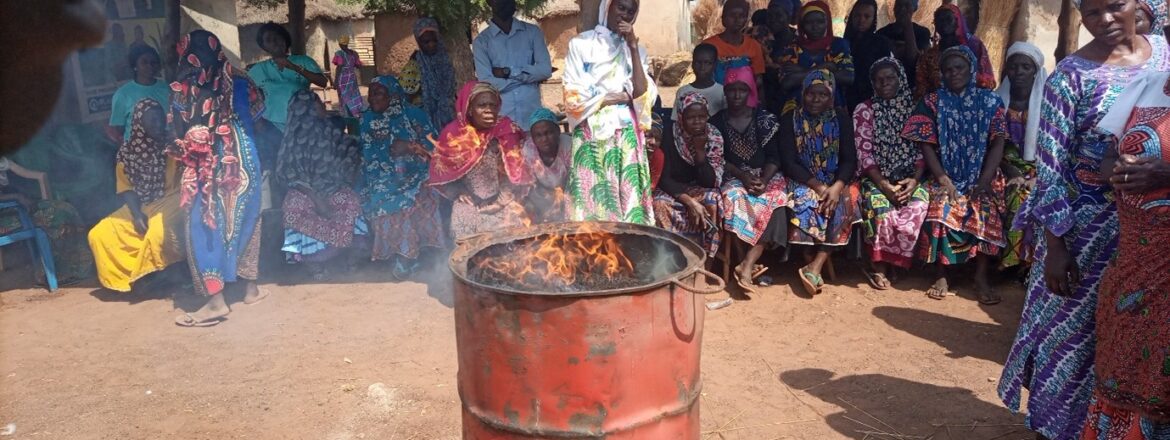
22
Jul
As part of incubating and creating more income generating or economic activities for the members, SWFA presented 30 of its members from Kpilo community in the Kumbungu District to benefit from Millar Institute training on grass charcoal production. The following equipment were made available by the trainer; a metal barrel for the charring, two big basins for mixing the char and starch, a coal pot, a compressing and shaping machine (moulding machine), cassava dough/flour, two pairs of gloves, a big stirring ladle, a big cup, a bucket and dirty oil for greasing the compressing machine.
The Charring process
The production started with charring of very well dried grasses (nuisance grasses), the metal barrel with five beneath it was filled with the grasses. The grasses were set on fire through the holes beneath the metal barrel. After the smoke reduces and only fire can be seen, the barrel was covered with a fitting lid and sealed with a suspension of sand and water around the edges. After the fire was off, the hot chaff was allowed to cool before it can be smashed and mix with the starch mixture.
Binding Material production
For the chaff to bond, hot water was mixed with the cassava dough in reasonable quantity to serve as starch that hold the chaff together. The materials provided for this process were cassava dough/flour, a stirring ladle, a coal pot, a metal basin for cooking the corn dough/flour a bucket for storing water. The mixture of flour/dough and water is produced and placed on fire. The ladle is used for stirring to prevent lumps and this process continues until starch is formed.
Compressing process
The moulding machine was oiled with dirty oil to enable smooth removal of the shaped charcoal from the moulding machine. The chaff was mixed with the starch mixture, the chaff was transferred from the basin where it has been mixed with dough onto the compressing machine (moulding machine). After the compression, the moulded were transferred into the sun and allowed to dry. The participants were advised to always use grasses around their home and farms which have no economic value or benefit (nuisance grasses) for their charcoal production, but not to use grasses which are already having economic value. The participants were reminded that, grass charcoal production is meant to reduce or eliminate bush burning, tree falling and gas emission in our environment.
